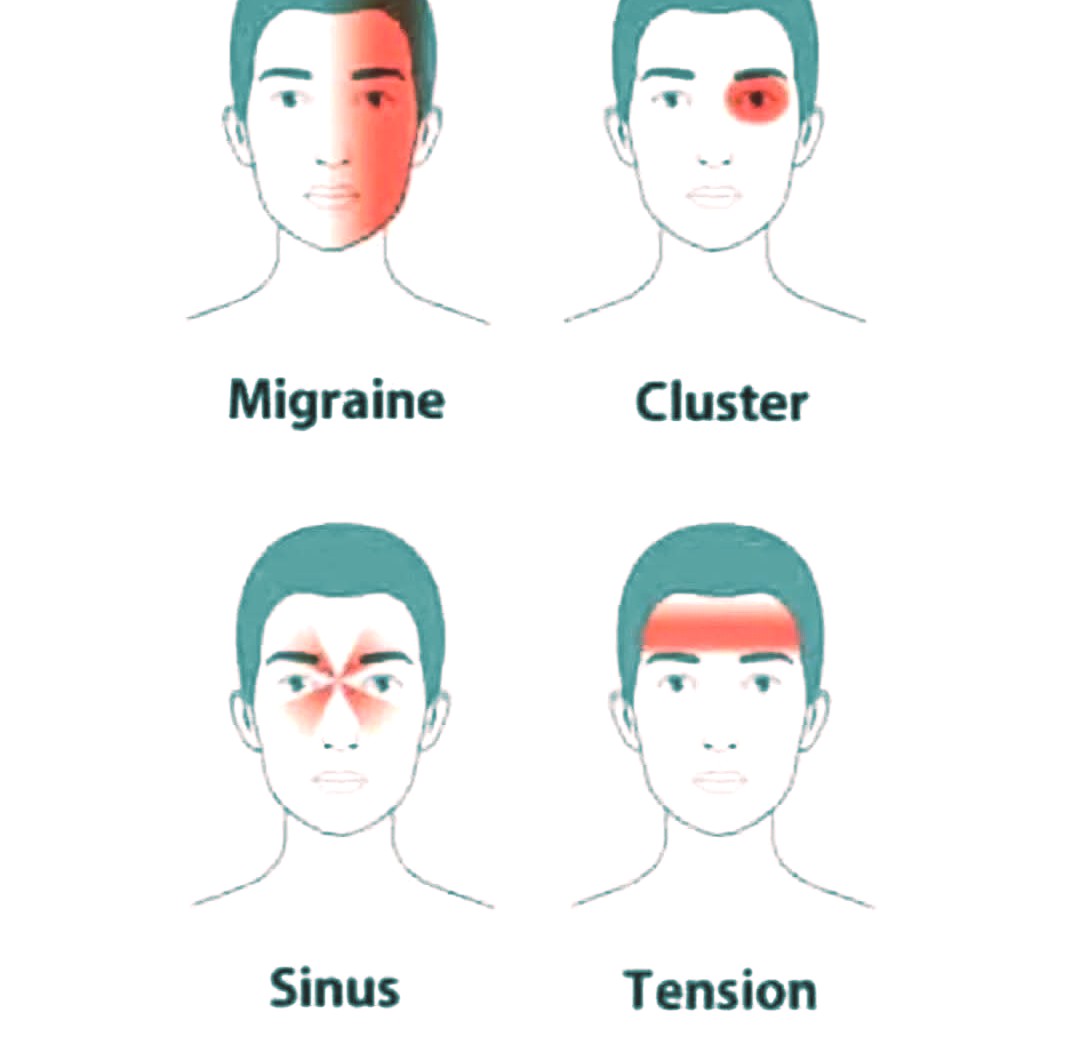This Is How Headaches Reveal What Is Wrong With Your Health

Most people think of headaches as just a minor nuisance — something to be ignored or fixed with a quick painkiller. But what if your headache is actually trying to tell you something important about your health?
Doctors now believe that the location, frequency, and type of pain can reveal deeper issues happening in your body. Understanding these signs could help you prevent more serious problems.
1. Headache in the Forehead (Tension Headache)
What it means: Stress, anxiety, or poor posture
Common symptoms: A dull, tight pressure across your forehead or around your head
What to do: Try relaxation techniques, stretching, and improving posture. Staying hydrated helps too. Chronic tension headaches may signal emotional burnout or long-term stress buildup.
2. Pain Behind the Eyes or in the Temples (Cluster Headache or Eye Strain)
What it means: Eye strain from too much screen time, or in rare cases, a cluster headache
Common symptoms: Sharp or burning pain behind one eye, often at the same time daily
What to do: Get your eyes checked, reduce screen exposure, and get more rest. If the pain is severe and recurring, consult a neurologist — cluster headaches can be intense and disabling.
3. Top of the Head (Tension or Migraine)
What it means: May be due to dehydration, high blood pressure, or migraines
Common symptoms: Throbbing pain, sensitivity to light, sound, or smell
What to do: Drink more water, rest in a dark room, and watch your blood pressure. If the pain gets worse during activity or includes vision issues, it might be a migraine.
4. Back of the Head and Neck (Cervicogenic Headache)
What it means: Often due to poor sleep posture, spinal issues, or neck muscle tension
Common symptoms: Pain starts at the neck and spreads upward
What to do: Use a supportive pillow, adjust posture, and avoid long periods of looking down (like on a phone). A chiropractor or physiotherapist can help in chronic cases.
5. Sudden, Intense Headache (Thunderclap Headache)
What it means: Could be a sign of a medical emergency such as bleeding in the brain or an aneurysm
Common symptoms: Extremely painful headache that peaks within seconds or minutes
What to do: Go to the emergency room immediately. Never ignore a sudden, severe headache, especially if it’s the worst you’ve ever felt.
Other Underlying Conditions Headaches Can Indicate:
- Sinus infection – Headache with pressure around cheeks, eyes, or forehead
- Hormonal imbalance – Headaches around menstruation or menopause
- Brain tumor (rare) – Persistent headache with vision or balance issues
- High blood pressure – Dull headaches, especially in the morning
When Should You Worry?
If your headache comes with any of the following, seek medical attention:
- Blurred or double vision
- Slurred speech or confusion
- Weakness in limbs
- Nausea or vomiting without cause
- Fever or stiff neck
Final Thoughts
Headaches aren’t just random — they’re signals from your body. Pay attention to them. The pain’s location, intensity, and timing can help you understand what’s wrong internally.
Don’t just silence the headache. Listen to it — it might be your body’s cry for help.






